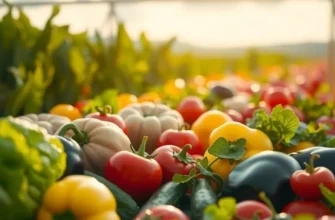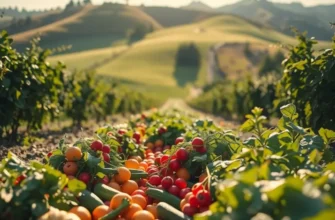Quinoa is a versatile, nutritious grain that can elevate any dish. Whether you’re a beginner or an experienced cook, knowing how to prepare quinoa properly will help you incorporate this superfood into your meals. From fluffy salads to savory bowls, mastering quinoa cooking techniques can enhance your culinary skills. Let’s explore how to cook quinoa effectively with easy tips that guarantee perfect results every time.
Choosing and Rinsing Quinoa

Choosing quinoa that suits your culinary needs is the first step to mastery. The three main types of quinoa—white, red, and black—each offer distinct characteristics. White quinoa is the most common and has a mild flavor, making it versatile for both savory and sweet dishes. It cooks quickly, lending itself well to a busy kitchen. For a more robust taste and a chewier texture, red quinoa is an excellent choice. It holds its shape after cooking, making it ideal for cold salads. Black quinoa has a slightly earthy flavor and a firmer texture than its counterparts. It’s perfect for dishes that require a more pronounced grain presence. Choosing the right quinoa type will depend on your recipe and taste preference.
Once you’ve selected the type of quinoa that fits your needs, the next crucial step is rinsing. Quinoa grains are coated with saponins—a natural compound that can impart a bitter taste if not properly removed. To ensure a pleasant flavor, rinse quinoa thoroughly under cold water for 2 to 3 minutes. Using a fine-mesh strainer will keep the small grains from escaping and ensures a complete rinse. Some pre-packaged quinoa may be pre-rinsed, yet it’s a good practice to rinse them again for assurance.
In addition to rinsing, visually inspecting your quinoa is a necessary step. Occasionally, quinoa can contain small debris or foreign particles. Spread the grains on a clean, dry surface and examine them closely, removing anything that doesn’t belong. This ensures that what you cook is as pure and wholesome as possible.
Ensuring your ingredients are ready not only enhances flavor but also contributes to a sustainable kitchen environment by reducing waste. For tips on minimizing food waste in your kitchen, check out some practical strategies from Hold My Carbs.
By taking these steps, you are not only elevating your quinoa dishes but also engaging in mindful cooking practices that can enrich your culinary repertoire.
Cooking Quinoa Perfectly

Cooking quinoa to perfection begins with understanding the essential steps that transform these tiny seeds into a versatile and fluffy base for countless dishes. Measuring your quinoa and water accurately is the cornerstone of successful preparation. A 2:1 water-to-quinoa ratio ensures each grain is perfectly cooked and tender. This foundational step not only sets the stage for texture but also maximizes the inherent nutty flavor of quinoa.
Once you’ve measured out your quinoa and water, it’s time to bring them to a boil. Use a medium-sized saucepan for this task. Add the water to the pot and turn on the heat. Wait for it to reach a gentle boil before introducing the quinoa. This method prevents the seeds from sticking to the bottom and guarantees an even cooking process.
Next, reduce the heat and cover the saucepan with a lid after adding the quinoa. This step is about patience and precision. Allow the quinoa to simmer gently for about 15 minutes. During this time, the grains will absorb the water, swell, and become tender. It’s crucial to avoid peering under the lid or stirring while it’s simmering, as this disrupts the steam’s work in fluffing up the grains evenly.
After the simmering phase, removing the saucepan from heat and letting it sit covered for an additional five minutes is crucial. This resting period allows the quinoa to continue steaming, locking in moisture and ensuring a light, fluffy texture. Much like cooking rice, this step shouldn’t be rushed.
Finally, the moment of truth: fluffing the quinoa. Use a fork to gently separate the grains. This seemingly simple action enhances the texture, making the quinoa airy and ready to absorb any flavors you introduce next. Proper fluffing not only improves the texture but also enhances the overall presentation, particularly if your dish is quinoa-centric.
For additional tips on maintaining food integrity and minimizing waste in your kitchen, consider visiting low-waste cooking prep. Applying these efficient techniques can elevate your quinoa dishes to further reduce kitchen waste.
Incorporating these mindful techniques into your cooking routine will lead to consistent results, making quinoa a delightful addition to your culinary repertoire. The result is a fluffy, tender quinoa, perfect as a base for salads, sides, or main courses in your next culinary creation.
Final words
Cooking quinoa is a straightforward and rewarding process that can enhance your daily meals. By carefully selecting and rinsing your quinoa and following the precise cooking methods outlined, you can achieve fluffy, delicious quinoa every time. Whether used as a base for salads, side dishes, or bowls, this nutritious grain adapts beautifully to various flavors and cuisines. Embrace the versatility of quinoa, and feel empowered to experiment with different recipes that showcase its delightful texture and nutritional benefits. With practice, you’ll become more confident in your cooking skills and enjoy the wholesome goodness of this superfood in your kitchen.







